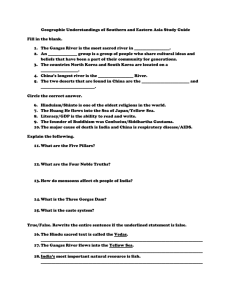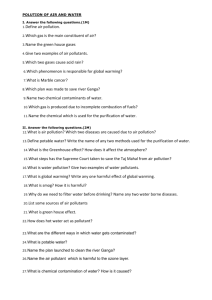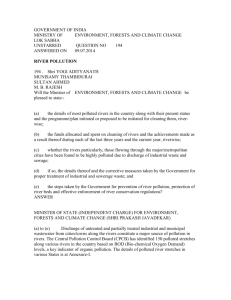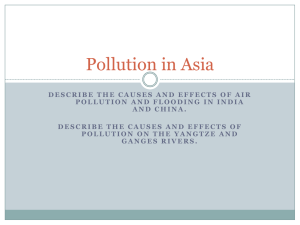Water Pollution In India What Is Water Pollution
advertisement
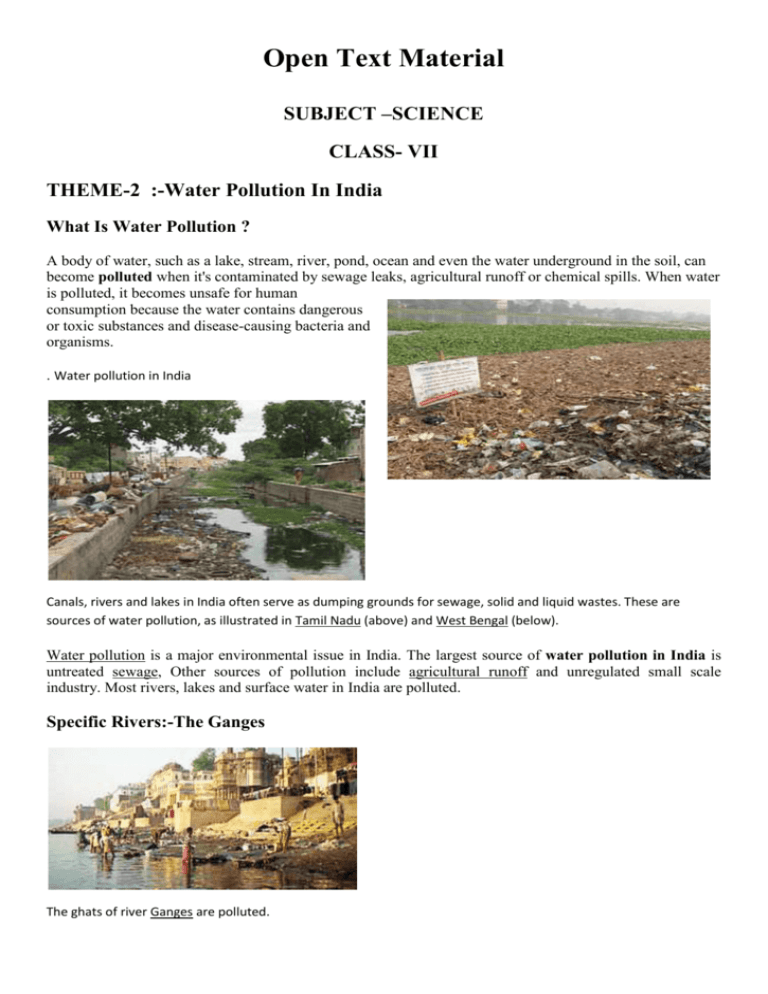
Open Text Material SUBJECT –SCIENCE CLASS- VII THEME-2 :-Water Pollution In India What Is Water Pollution ? A body of water, such as a lake, stream, river, pond, ocean and even the water underground in the soil, can become polluted when it's contaminated by sewage leaks, agricultural runoff or chemical spills. When water is polluted, it becomes unsafe for human consumption because the water contains dangerous or toxic substances and disease-causing bacteria and organisms. . Water pollution in India Canals, rivers and lakes in India often serve as dumping grounds for sewage, solid and liquid wastes. These are sources of water pollution, as illustrated in Tamil Nadu (above) and West Bengal (below). Water pollution is a major environmental issue in India. The largest source of water pollution in India is untreated sewage, Other sources of pollution include agricultural runoff and unregulated small scale industry. Most rivers, lakes and surface water in India are polluted. Specific Rivers:-The Ganges The ghats of river Ganges are polluted. More than 500 million people live along the Ganges River. An estimated 2,000,000 persons ritually bathe daily in the river, which is considered holy by Hindus. Ganges river pollution is a major health risk. NRGBA was established by the Central Government of India, on 20 February 2009 under Section 3(3) of the Environment Protection Act, 1986. It also declared Ganges as the "National River" of India. The chair includes the Prime Minister of India and Chief ministers of states through which the Ganges flows. The Ganga, the most sacred and worshipped river of the Hindus, is now one of the most polluted rivers of the country. Twenty-five big cities located along its bank generated 1,340 mid sewage over 95 per cent of the same entered the river without being treated prior to the Ganga Action Plan (GAP). Out of the total length of the river (2,525 km) for Gangotri to Gangasagar about 600 km long stretch is highly polluted. This pollution is due to the dumping of city garbage, industrial effluents, human and animal excreta, agricultural wastes, pesticides, burning of human bodies, community bathing and faulty social and religious practices. According to an estimate about 19,659 tons of polluted matters enter the river every year of which 55.4 per cent is contributed by Uttar Pradesh and 18.8 per cent by West Bengal (Lakshmi & Srivastava, Vijyart, Jan-March 1986). Ganga Action Plan The Ganga action plan was, launched by Shri Rajeev Gandhi, the then Prime Minister of India on 14 Jan. 1986 with the main objective of pollution abatement, to improve the water quality by Interception, Diversion and treatment of domestic sewage and present toxic and industrial chemical wastes from identified grossly polluting units entering in to the river. The other objectives of the Ganga Action Plan are as under. Control of non-point pollution from agricultural run off, human defecation, cattle wallowing and throwing of unburnt and half burnt bodies into the river. Research and Development to conserve the biotic, diversity of the river to augment its productivity. New technology of sewage treatment like Up-flow Anaerobic Sludge Blanket (UASB) and sewage treatment through afforestation has been successfully developed. Rehabilitation of soft-shelled turtles for pollution abatement of river have been demonstrated and found useful. Resource recovery options like production of methane for energy generation and use of aquaculture for revenue generation have been demonstrated. To act as trend setter for taking up similar action plans in other grossly polluted stretches in other rivers. SAMPLE QUESTIONS :1) a) What is water pollution? What are the sources of water pollution in India? b) Suggest any three methods to control water pollution. 2) What are the objectives of GANGA ACTION PLAN. Reference:1. 2. 3. 4. http://www.mppcb.nic.in http://www.teara.govt.nz http://gradestack.com http://en.wikipedia.org 2 3 5


